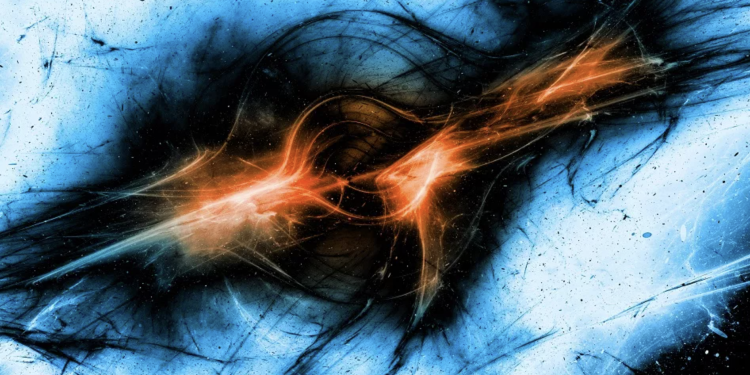One of the most pressing mysteries in modern cosmology is the nature of dark matter. Though it accounts for more than 85% of the universe’s mass, we’ve never directly observed it, and its true composition remains elusive.
A recent study published in the Journal of Cosmology and Astroparticle Physics may offer a breakthrough. Scientists have detected traces of antimatter in cosmic rays that could hint at a previously unobserved class of particles, known as WIMPs (Weakly Interacting Massive Particles), potentially shedding light on dark matter.
What Does Antimatter Reveal?
The discovery of antimatter, particularly antihelium, in cosmic rays has led researchers to revisit WIMPs as a possible explanation for dark matter. These particles are elusive, but if they exist, they could be pivotal in understanding the makeup of the universe.
Pedro De la Torre Luque, a physicist at Madrid’s Institute of Theoretical Physics, explains, “WIMPs have been theorized for decades as strong candidates for dark matter, but so far, there has been no direct detection.”
Several years ago, WIMPs seemed like the answer to the dark matter puzzle. Scientists were optimistic that identifying how these particles interacted would lead to evidence. However, research ruled out entire categories of WIMPs due to the lack of expected emissions. While WIMPs haven’t been completely dismissed, the pool of possible candidates has significantly narrowed.
“Most proposed models have been excluded, leaving only a few viable options today,” adds De la Torre Luque.
A New Hope
Recent findings from the AMS-02 experiment have reignited interest in WIMPs. The Alpha Magnetic Spectrometer (AMS-02), an instrument aboard the International Space Station, studies cosmic rays and has detected traces of antinuclei—specifically antihelium—where scientists didn’t expect them.
To understand the significance of this discovery, we must first understand antimatter. Unlike ordinary matter, antimatter consists of particles with opposite electrical charges. For instance, electrons carry a negative charge, while positrons (their antimatter counterparts) carry a positive charge. When matter and antimatter collide, they annihilate each other, releasing energy in the form of gamma radiation.
Although antimatter is rare in our universe, some of it dates back to the Big Bang, while new antimatter continues to form through cosmic events. This makes the detection of antimatter in cosmic rays significant. “When you detect antimatter like antihelium where you expect very little, it signals something extraordinary is occurring,” says De la Torre Luque.
The antihelium detected by AMS-02 could be a product of WIMP interactions. According to theory, when two WIMP particles collide, they annihilate each other, producing both matter and antimatter, potentially explaining the elevated levels of antihelium.
Testing the Theory
Researchers have compared WIMP models with the antimatter observations, and some of the data align with the theory. However, the presence of certain isotopes, particularly antihelium-4, presents challenges.
“Cosmic rays can theoretically produce antiparticles, but the expected quantity of antihelium is extremely low,” says De la Torre Luque. “We expected to detect one antihelium event every few decades, yet AMS-02 recorded around ten events—far beyond our predictions.”
This suggests that WIMP annihilation may be the source, but explaining the abundance of heavier isotopes, like antihelium-4, remains a puzzle. This could mean there are even more exotic particles involved than WIMPs alone.
The Future of Dark Matter Research
While the WIMP hypothesis has faced setbacks, recent observations from AMS-02 have reopened the case. However, more precise data and advanced detection methods are needed to confirm their existence or uncover an entirely new class of particles.
“This study shows that the path to understanding dark matter is still open, but we may need to expand our theoretical models,” suggests De la Torre Luque. “It’s possible we’ll discover a new ‘dark sector’ of physics with even more exotic particles than we’ve imagined.”











